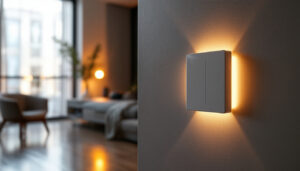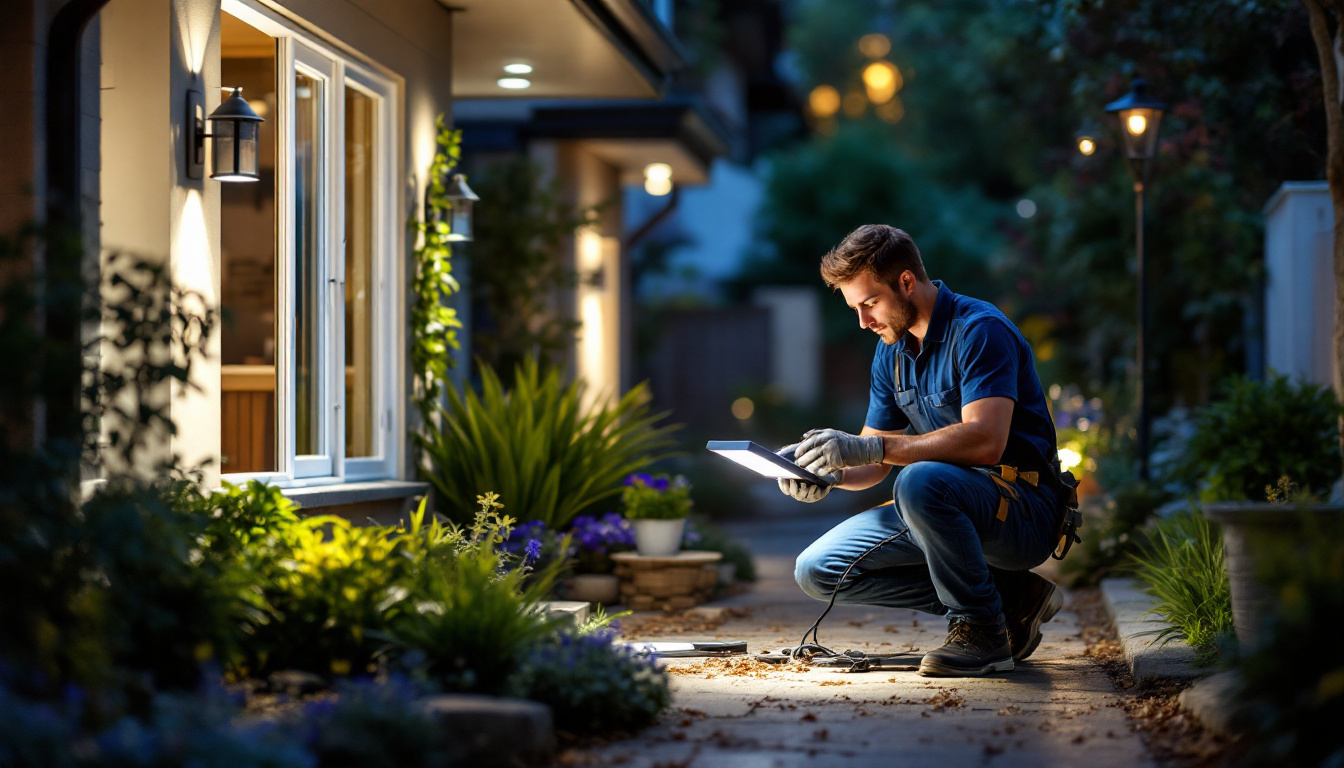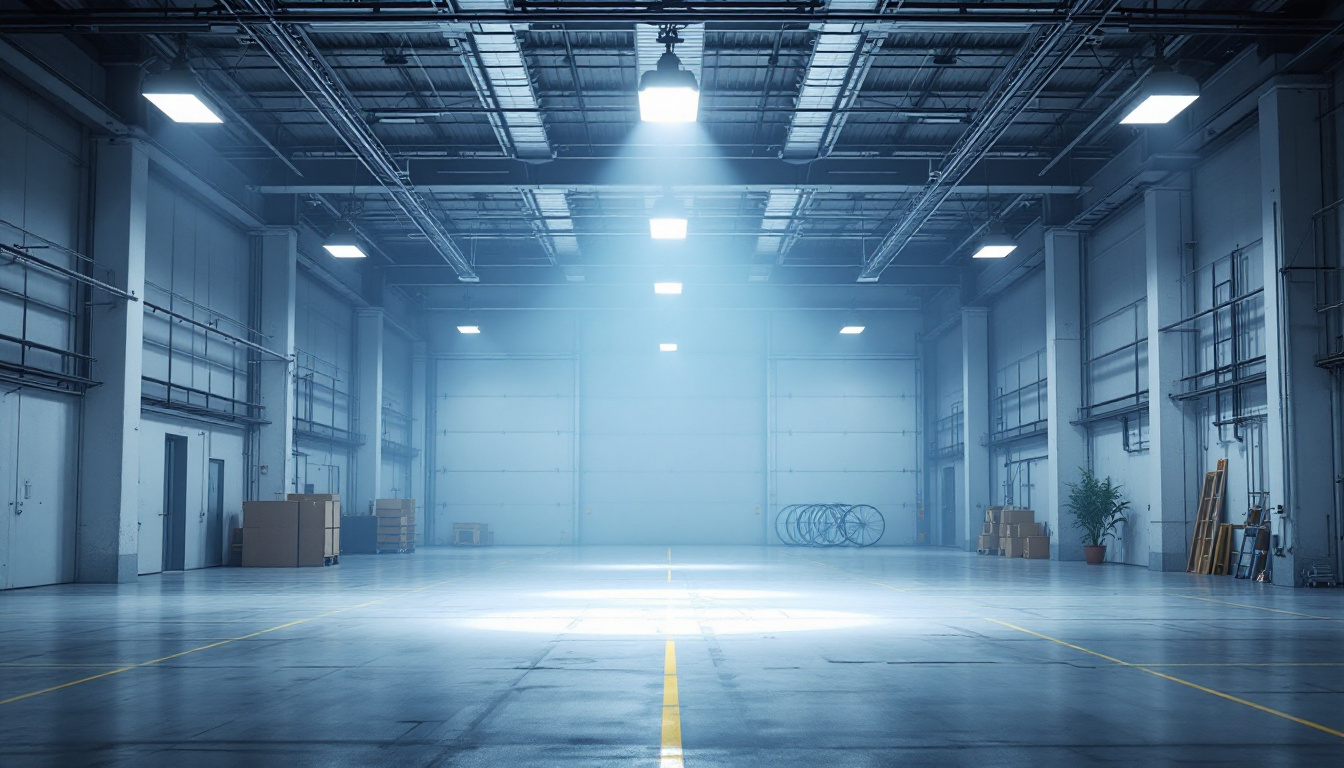

Recessed lighting has become a staple in modern interior design, offering a sleek and unobtrusive way to illuminate spaces. Among the various options available, the 6-inch recessed light can stands out for its versatility and effectiveness. For lighting contractors, understanding the nuances of this fixture is crucial for delivering quality installations and ensuring client satisfaction. This article delves into the essential points that every lighting contractor should consider when working with 6-inch recessed light cans.
Before diving into the specifics, it’s important to grasp the fundamental aspects of 6-inch recessed light cans. These fixtures are designed to be installed into the ceiling, creating a clean look while providing ample illumination. Their size allows for a variety of bulb types, making them adaptable to different lighting needs. This flexibility makes them a popular choice in both residential and commercial settings, where lighting design can significantly impact the overall ambiance and functionality of a space.
The versatility of 6-inch recessed light cans is largely due to their compatibility with various bulb types. LED, incandescent, and halogen bulbs can all be used, each offering unique benefits. LED bulbs, for instance, are energy-efficient and have a longer lifespan, making them a popular choice among environmentally conscious clients. Additionally, LEDs come in a range of color temperatures, allowing homeowners to select a warm, cozy glow or a bright, daylight-like illumination depending on their preferences.
Incandescent bulbs, while less energy-efficient, provide a warm light that many homeowners prefer for living spaces. They are often favored for their ability to render colors accurately, making them ideal for areas where aesthetics are paramount. Halogen bulbs, on the other hand, offer bright, white light and are often used in task lighting applications. Their ability to dim smoothly also adds to their appeal in settings where adjustable lighting levels are desired. Understanding these options allows contractors to make informed recommendations based on the specific needs of their clients, ensuring that the lighting not only meets functional requirements but also enhances the overall design of the space.
The construction of the 6-inch recessed light can is another critical aspect for contractors to consider. These cans can be made from various materials, including aluminum and steel, each offering different durability and heat dissipation properties. For instance, aluminum cans are typically lighter and resistant to rust, while steel cans may provide additional strength. The choice of materials can also affect the installation process, as lighter cans may be easier to handle and position, particularly in high ceilings or hard-to-reach areas.
Design features such as insulation contact ratings (IC-rated) are also essential. IC-rated cans can be installed in ceilings with insulation, preventing heat buildup and reducing fire hazards. This feature is particularly important in energy-efficient homes where insulation is a priority. Furthermore, many recessed light cans now come with adjustable trims, allowing for directional lighting that can highlight artwork or architectural features, adding an extra layer of sophistication to the lighting design. Contractors should always verify the specifications of the recessed can to ensure compliance with local building codes and safety standards, as well as to provide clients with the best possible lighting solutions tailored to their specific environments.
Proper installation is key to maximizing the performance and lifespan of 6-inch recessed light cans. Lighting contractors must adhere to best practices to ensure that the fixtures operate efficiently and meet the expectations of their clients.
Before installation, planning the layout of recessed lights is crucial. Factors such as ceiling height, room size, and the purpose of the space should guide the placement of the cans. A general rule of thumb is to space the fixtures approximately 4 to 6 feet apart for optimal coverage. However, this may vary based on the specific lighting needs of the area.
Additionally, contractors should consider the beam angle of the selected bulbs. A narrower beam angle may require closer spacing, while a wider angle can allow for greater distance between fixtures. By carefully planning the layout, contractors can create a balanced and aesthetically pleasing lighting design.
Electrical connections are a critical component of the installation process. Ensuring that all connections are secure and compliant with local electrical codes is essential for safety and functionality. Contractors should use appropriate wire gauges and connectors, taking care to follow the manufacturer’s instructions for wiring the recessed light cans.
Moreover, it’s advisable to install dimmer switches where applicable. Dimming capabilities not only enhance the ambiance of a space but also contribute to energy savings. When installing dimmers, ensure they are compatible with the type of bulbs being used, as some LED bulbs require specific dimmer switches to function properly.
As energy efficiency becomes increasingly important in the construction and renovation industry, lighting contractors must be well-versed in sustainable practices. The choice of recessed light cans can significantly impact a building’s energy consumption.
Opting for LED bulbs in 6-inch recessed light cans is one of the most effective ways to enhance energy efficiency. LEDs consume significantly less power compared to incandescent and halogen bulbs, resulting in lower energy bills for homeowners. Additionally, they have a longer lifespan, reducing the frequency of replacements and associated waste.
Contractors should also educate clients on the benefits of energy-efficient lighting, including potential rebates or incentives offered by local utility companies. By promoting sustainable options, contractors can position themselves as knowledgeable professionals who care about both the environment and their clients’ financial well-being.
In many regions, there are specific energy codes that govern the installation of lighting fixtures, including recessed lights. Contractors must stay informed about these regulations to ensure compliance and avoid potential penalties. Familiarity with codes such as the International Energy Conservation Code (IECC) can help contractors navigate the requirements effectively.
Incorporating energy-efficient practices not only benefits the environment but also enhances the reputation of the contractor. Clients are increasingly looking for professionals who prioritize sustainability, making it a valuable selling point in a competitive market.
Staying current with design trends is essential for lighting contractors aiming to meet the evolving preferences of their clients. Recessed lighting continues to adapt to contemporary styles and technologies, offering exciting opportunities for innovative installations.
Smart home technology is on the rise, and integrating smart lighting solutions into recessed light cans is a trend that contractors should embrace. Clients may seek the convenience of controlling their lighting through mobile apps or voice-activated devices. By offering smart lighting options, contractors can differentiate themselves and appeal to tech-savvy homeowners.
When installing smart lighting, it’s important to ensure compatibility with existing home automation systems. This may involve additional wiring or the use of specific smart bulbs that can connect to Wi-Fi or Bluetooth networks. Providing clients with a seamless smart lighting experience can enhance their satisfaction and lead to positive referrals.
Recessed lighting can also be used to accentuate architectural features within a space. By strategically placing 6-inch recessed cans, contractors can highlight artwork, architectural details, or textured walls. This technique adds depth and interest to a room, transforming it into a dynamic environment.
Contractors should collaborate with clients to identify key features that they wish to showcase. By understanding the client’s vision, contractors can create a tailored lighting plan that enhances the overall aesthetic of the space.
Additionally, clients should be advised to check the bulbs periodically to ensure they are functioning correctly. Replacing burnt-out bulbs promptly not only maintains the quality of light but also prevents potential damage to the fixture itself.
Contractors should also be equipped to troubleshoot common issues that may arise with recessed lighting. Flickering lights, for instance, can be indicative of loose connections or incompatible dimmer switches. Educating clients on these potential problems can empower them to address minor issues before they escalate.
In cases where more significant problems occur, such as electrical failures, it’s crucial for contractors to emphasize the importance of professional assistance. Clients should be encouraged to contact a qualified electrician to ensure their safety and the integrity of the lighting system.
The 6-inch recessed light can is a versatile and essential component in modern lighting design. By understanding the various aspects of these fixtures, from installation best practices to energy efficiency and design trends, lighting contractors can deliver exceptional service to their clients. Staying informed and adaptable in this ever-evolving industry will not only enhance the contractor’s skill set but also contribute to the satisfaction and loyalty of clients.
As the demand for stylish and functional lighting solutions continues to grow, contractors who prioritize education and innovation will find themselves at the forefront of the industry. Embracing the complexities of 6-inch recessed light cans will ultimately lead to successful projects and a thriving business.
Ready to elevate your lighting projects with the best 6-inch recessed light cans on the market? Look no further than LumenWholesale, where we provide contractors with exceptional, spec-grade lighting products at unbeatable wholesale prices. Our commitment to quality and affordability means you can access a vast selection of top-tier lighting solutions without the burden of inflated markups. Plus, with free shipping on bulk orders, you can stock up on the lighting essentials you need while keeping your costs down. Don’t compromise on quality or value—visit LumenWholesale today and discover the ideal blend of performance, price, and convenience for all your lighting needs.

Discover essential tips and strategies for lighting contractors to prevent common pitfalls when installing outdoor light boxes.

Discover the ultimate guide to bulk light fixtures with our essential checklist tailored for lighting professionals.

Discover the essential insights lighting contractors need to know about sconce lights.

Discover how the High Bay LED Light Calculator can revolutionize your approach to energy-efficient lighting.
Get notified when NEW deals are released.
Optimize your budget with wholesale discounts.
Only top-quality, specification-grade lighting products.
No additional costs at checkout - what you see is what you pay.
We understand the unique needs of contractors.